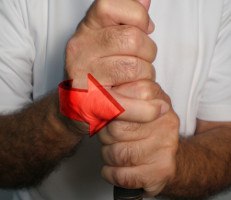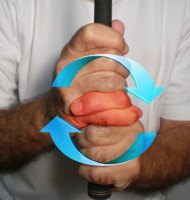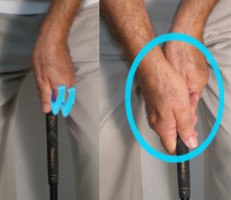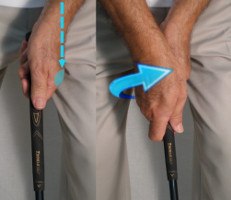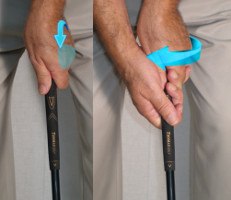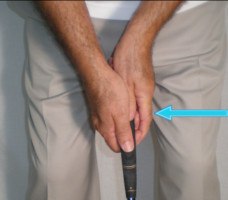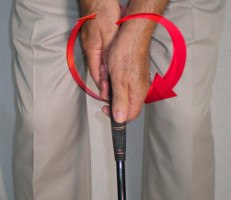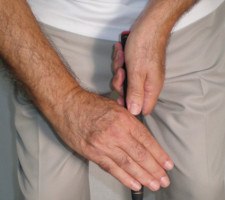Pros and Cons of Every Golf Grip Style |
Best Grip? Overlapping vs Interlocking |
Grip style: Interlocking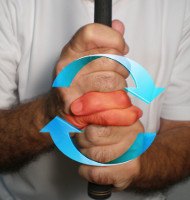 |
Hand position: Neutral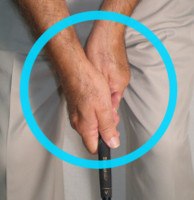 |
Putt style: Long putter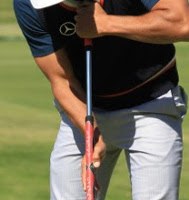
|

There are a lot of great looking swings on the PGA TOUR. Yet today’s game is surprisingly short on players sporting classic grips. David Hearn’s grip is the exception.
Hearn, a Canadian who turned pro in 2001, displays the rare neutral grip in a sea of strong holds. For any fan of textbook technique, it’s a breath of fresh air. Hearn’s left and right hands match up perfectly, the “V’s” formed by thumbs and forefingers aligned with the club’s handle and pointing to his chest.
What’s so great about a neutral grip? Mainly, it allows you to swing the club on plane and release properly with no manipulation through the hitting zone. The neutral-grip golfer can also curve shots left or right by simply altering his stance, rather than making drastic grip or swing changes.
So, why don’t more pros and amateurs adopt a neutral grip? Probably because a strong grip delivers more distance. Indeed, Hearn’s driving stats reveal a weakness in this department – he failed to reach a 280-yard average in 2013 and ’14, ranking near the bottom of the standings.
He tends to make up for it on the greens, however. Wielding a long putter, Hearn’s grip is standard-issue. He places the handle against his chest with his left hand, while his right fingers and thumb gently clasp the putter’s midsection. Hearn ranked inside the tour’s top 45 for strokes gained putting from 2012-14, topping out at 14th.
How will Hearn and his fellow long putters, including Adam Scott, adapt once “anchoring” is banned in 2016? That’s the million-dollar question.
